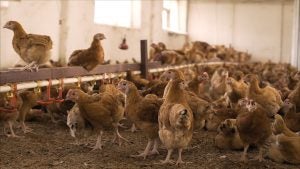The price of eggs is taking its toll on American families, and in some states, it’s even getting harder to find eggs on the shelves.
Since December 2021, the average price of eggs in U.S. households has soared nearly 60 percent, according to the latest economic release from the U.S. Bureau of Labor Statistics.
The current state of inflated egg prices is primarily due to the worst breakout of Avian bird flu that the United States has seen. Since early 2022, more than 50 million laying hens have died. And, although those hens account for only about 5 percent of the laying population, the feed cost has also taken a toll on producers and consumers alike.

Skyrocketing soybean prices coupled with an increased holiday demand for eggs and lagging production rates have also contributed to the pricing conundrum. Fortunately, according to Curt Covington, senior director of partner relations at AgAmerica, egg prices will see some corrections even if Avian flu continues to threaten poultry producers.
“Inflated prices are expected to decline in the first half of 2023 due to the decrease in demand for eggs after the holidays. But if input costs continue to increase and the bird flu continues to kill large quantities of hens, the costs will most likely be passed on to consumers,” said Covington.
Even though consumers probably won’t find a bargain at the supermarkets, they can buy lower grade eggs, buy eggs in bulk, and price shop to navigate current egg prices. Consumers may also find lower priced products at farmers’ markets.
Unfortunately, most supermarkets won’t be able hedge the price of eggs by purchasing for local growers, as their products are contracted on a national scale by corporate offices.
“As holiday demand subsides, we will likely see a 25 to 30 percent correction in inflated egg prices by the second quarter of 2023, if not sooner,” Covington said. “However, bird flu will continue to be a challenge for poultry farmers who have been playing catch up to meet demand even prior to COVID.”
Another challenge on the horizon for producers will be the rebuilding of laying flocks. Producers may be limited by the price of feed and the financial burdens of implementing measures to prevent bird flu exposure.
While Avian bird flu is a concern for commercial producers, small and hobby farms should also take preventative measures to protect their flocks. Bird flu is typically carried by free-flying waterfowl, so producers are cautioned to maintain a line of separation around flocks while preventing contact between domestic birds and wild birds and their feces.


